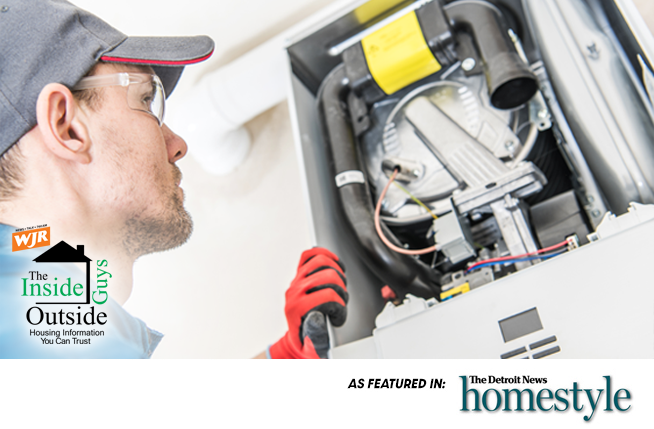
By Ken Calverley and Chuck Breidenstein
DETROIT, September 30, 2021 ~ In days gone by, autumn was a time of celebration and harvest. Food stuffs were processed, canned and stored. Fields that required back breaking labor throughout the summer would now lay fallow until spring.
But fall also created a sense of urgency in our ancestors as the cold winter months approached. Staying warm was a life-or-death proposition.
With the onset of winter, they had to locate long-dead trees, fell them, cut the limbs into manageable lengths and transport them to the house.
Once there they then had to cut, split and stack the wood to keep it dry and close.
The house they would heat with that wood was literally built around a fireplace, a mass of stone and mortar designed to extract every precious BTU of heat from the fire and transfer it to the house and its inhabitants.
That fireplace became a luxury item when we developed cast-iron furnaces that burned coal. These big, metal, boxes had to be fed every few hours with fuel from an adjoining coal room that was filled every year.
Heat radiated from the “box” into the surrounding air and rose through grates set into the floor. We later added crude, round, ducts to the box – usually one for every room on the main floor. This strange configuration came to be called an “octopus” furnace.
These units were also termed “gravity feed” because they depended on warm air rising through one set of floor grates, giving up its heat to the cold exterior walls, then “falling” back down through another set of floor grates.
Octopus furnaces survived well into the 20th century, and many were converted first to fuel oil, then to gas with the invention of the Power Pile, a unique device that creates current to operate a gas valve when heated by a pilot flame.
Our heating, ventilation and air conditioning (HVAC), systems took a giant leap forward with the electrification of homes. Blower motors were added to a boxed furnace that was connected to a looped circuit of metal ducts.
Supply air ducts ran to vents in the floors near exterior windows while return air ducts ran from the top of interior walls back to the base of the furnace where the “cold” air was drawn through a filter, reheated, and sent back through the supply side.
This configuration has remained basically the same for decades, but the furnaces themselves have evolved in terms of efficiency and complexity.
While those old coal burners may have only required an occasional ash dump, the furnaces in our homes today include solid state control boards, sophisticated motors, condensate drains and numerous safety overrides that require periodic maintenance.
Something as simple as using the wrong filter or closing off registers can create back pressures that affect performance and efficiency.
The same motor that you depend on to send warm air through the ducts was working overtime all summer helping to cool the house.
The Guys know people are leery of having a furnace “clean and check” performed. Owners are certain the technician will create a false diagnosis and try to sell you a new system.
How else can a company afford to send a trained technician to your home for $129? The truth is, they can’t. Those specials offered by good companies like Sharon’s in Westland, Colonial in Plymouth or Royal Oak HVAC in Roseville are “loss leaders” that are intended to show you what a good company can do and, hopefully, to win you as a long-term customer.
Companies like these provide honest and thorough assessments and servicing. But its not just about peace of mind.
Your system warranty, safety and the life of the unit may depend on professional and periodic “tuneups” where they look at CO emissions, the heat exchanger and burner assembly, gas pressure, lubrication and other vital functions.
Ideally, the Guys would suggest you have the same company that installed your system provide maintenance and service on an annual basis. But if you don’t know the original installer or you haven’t been well taken care of by them, know you can find great HVAC firms at InsideOutsideGuys.com.
MORE ARTICLES:


